[ENG-ESP] 📖LA CASA VERDE//THE GREEN HOUSE | Book Review 📖 - Mario Vargas Llosa
Mario Vargas Llosa


THE GREEN HOUSE
Mario Vargas Llosa
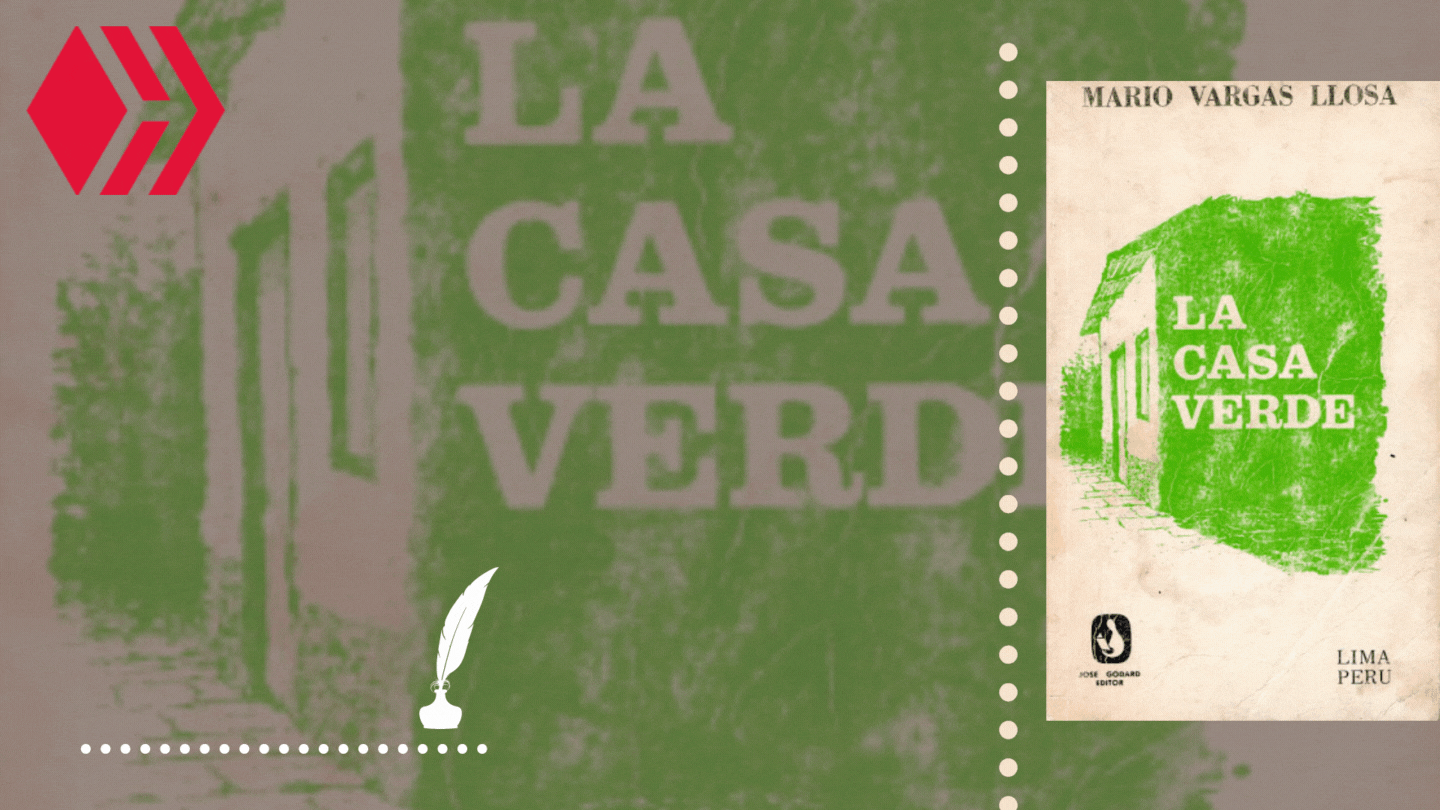
Howdy, Hivers readers. One of the first books I read was "The Green House" by the writer "Mario Vargas Llosa", which despite having been a little messy with the reading, since I spent a lot of time reading it, due to time factors, I ended up being captivated by the stories that are broken down around the green house. This book came to me by chance, where until that moment, I only knew Vargas Llosa as a critic of leftist politics, but rummaging in the library I came across this book, which at first I did not give it much importance but as I was advancing, I managed to realize how interesting the story was and as I was getting deeper into the reading, I was investigating more about the author and what this book represented for him, since it was his second book and with which he had an important recognition in the critics and in the reading community of the time, since this book, despite having been released in the mid 60's, remained for a long time as one of the most popular, giving Vargas Llosa the Rómulo Gallegos prize.
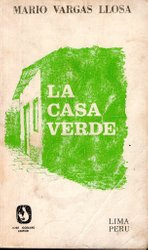
Qué tal, Hivers lectores. Uno de los primeros libros que leí fue “La casa verde” del escritor “Mario Vargas Llosa”, que a pesar de haber sido un poco desordenado con la lectura, ya que pasé mucho tiempo leyéndolo, por factores de tiempo, me terminó de cautivar las historias que se desglosan en torno a la casa verde. Este libro llega a mí por casualidad, donde hasta aquel momento, solo conocía a Vargas Llosa como un crítico de la política izquierdista, pero hurgando en la biblioteca me topé con este libro, que al principio no le di mayor importancia pero que a medida que iba avanzando, lograba darme cuenta de lo interesante de la historia y a medida que iba adentrándome en la lectura, iba investigando más del autor y de lo que representaba, este libro para él, ya que fue su segundo libro y con el que tuvo un importante reconocimiento en la crítica y en la comunidad lectora de la época ya que este libro a pesar de haber salido a la venta a mediados de los 60´s, por mucho tiempo se mantuvo como uno de los de mayor popularidad, dándole este, a Vargas Llosa, el premio Rómulo gallegos.
history summary
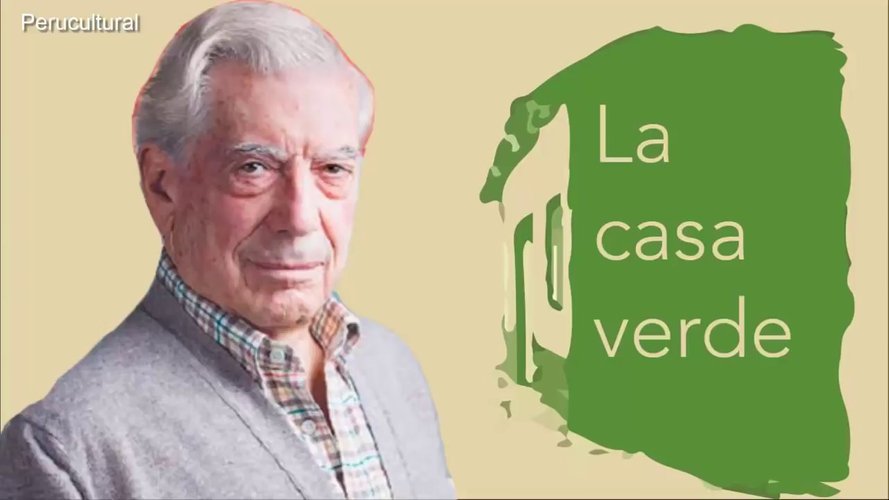
"The Green House" is a book that tells us a finite number of stories that are carried out and this one (The Green House) is the connector of each of them, creating the environment where, despite the puzzle in which the plot is carried out, each one converges in its own time. It is difficult to make this review without giving important data within the reading, due to its form and structure. At first let's be clear that this story takes place in several towns in Peru, where there is one which is the main one, where "the green house" sits and so far we only know that this is the place that connects the stories. Among them is that of a mysterious gentleman who comes to the town of Piura, called Don Anselmo, this is who from its bases builds the aforementioned green house, where despite its 'little information draws much attention to the pastor of the town, who foreshadowed the construction of a "den of doom. Eventually this omen became a reality, because the green house was a brothel or brothel, where women prostituted themselves and men enjoyed the services offered by the green house. While this was happening, in the town resounds the story of a young woman who was found almost dead and already pecked by the vultures, leaving her blind, being the young Antonia, who after being rescued remains under the care of a lady of the town (Juana Baura). Eventually, Don Anselmo kidnapped Antonia and forced her to live in a room in the green house, where he raped her whenever he wanted and held her captive. Eventually the abduction is discovered, because Antonia had given birth to a girl (daughter of Don Anselmo) dying in the process, having knowledge of this tragedy the people are armed with torches and burn the green house, which over the years will be reopened by who, growing up, is the daughter of Don Anselmo. At the same time, other stories occur, one of Sergeant Lituma, who had friends of very bad appearance and behavior, called "Los Inconquistables", who, despite having overcome these bad things, meets a young Bonifacia, with whom he falls in love and marries her, But when he meets again with "Los Inconquistables" he returns to his life of lust and vices, there in the green house, beating his wife and for an event occurred in the green house he falls prisoner, leaving Bonifacia helpless and this leads her to prostitute herself in the brothel, and when he leaves prison he lives on what his wife earns for prostitution. There is also the story of the bandit Fushía, who fleeing from Brazil for being a smuggler, arrives in these lands of Peru, meets a beautiful young woman, but continues his life as a smuggler, and due to his promiscuous life, he contracts leprosy, leaving him without his wife "Lalita" who leaves with another man. This is really a book that tells quite strong stories and in it I highlight, as usual, three main points: 1. What is the theme of the novel? 2. The rhythm of the story. 3. What style does this book have in terms of writing? If you like stories with character, without filters and with a touch of reality among fiction, this is a good novel to enrich your reading and get to know a good work of "Mario Vargas Llosa".
“La Casa Verde” es un libro que nos relata una cantidad finita de historias que se van llevando a cabo y esta (La casa verde) es el conector de cada una de ellas, creando el ambiente en donde a pesar del tal vez rompecabezas en el cual se va llevando la trama, convergen cada una a su tiempo. Es difícil hacer este review sin dar datos importantes dentro de la lectura, debido a su forma y estructura. En principio dejemos en claro que esta historia, se desarrolla en varios poblados de Perú, en donde existe uno el cual es el principal, donde se asienta “la casa verde” y hasta ahora solo sabemos que este es el lugar que conecta las historias. Entre ellas está la de un misterioso caballero que llega al pueblo de piura, llamado Don Anselmo, este es quien desde sus bases construye la mencionada casa verde, donde a pesar de su ´poca información llama mucho la atención al párroco del pueblo, quien presagiaba la construcción de un “Antro de perdición”. Con el tiempo este presagio se convierte en realidad, debido a que dicha casa verde era un burdel o casa de citas, donde mujeres se prostituían y hombres disfrutaban de los servicios que ofrecía la casa verde. Mientras esto ocurría, en el pueblo resuena el recate de una joven a quien fue encontrada casi muerta y ya picoteada por los buitres, dejándola ciega, siendo esta la joven Antonia, quien luego de ser rescatada queda bajo el cuidado de una señora del pueblo (Juana Baura). Con el tiempo el tal Don Anselmo, rapta a Antonia y la obliga a vivir en un cuarto de la casa verde, donde la violaba cuando quería y la tenía cautiva. Con el tiempo se descubre del rapto, debido a que Antonia, había dado a luz a una niña (Hija de Don Anselmo) muriendo ella en el proceso, teniendo conocimiento de esta tragedia el pueblo se arma de antorchas y queman la casa verde, que con los años será reabierta por quien, al crecer, es la hija de Don Anselmo. Paralelamente ocurren otras historias, una del Sargento Lituma, quien tenía amigos de muy mal semblante y comportamiento, llamados “Los Inconquistables” que a pesar de haber superado estas malas andanzas, conoce a una joven Bonifacia, de la que quedó enamorado y se casa con ella, pero al reencontrarse con “Los Inconquistables” vuelve a su vida de lujuria y vicios, allí en la casa verde, golpeando a su esposa y por un hecho ocurrido en la casa verde cae preso, dejando a Bonifacia desamparada y esto la lleva a prostituirse en el burdel, y al salir de la cárcel vive de lo que gana su esposa por prostituirse. También está la historia del bandido Fushía, que huyendo de Brasil por ser contrabandista, llega a estas tierras de perú, conoce a una hermosa joven, pero continúa su vida de contrabandista, y debido a su vida promiscua, contrae lepra, dejándolo sin su esposa “Lalita” quien se va con otro hombre. Realmente este es un libro que narra historias bastante fuertes y en ella destaco, como es costumbre, tres puntos principales: 1. ¿cuál es la temática de la novela? 2. El ritmo de la historia. 3. ¿Qué estilo posee este libro en cuanto a redacción? Si te gustan las historias con carácter, sin filtros y con su toque de realidad entre la ficción, esta es una buena novela para enriquecer la lectura y así conocer una buena obra de “Mario Vargas Llosa”.
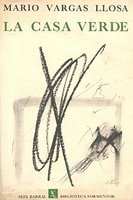
1. What is the theme of the novel?
If we are talking about stories, this book has a very delicate style in situations where vices, rapes, hatred and other causes, quite indigestible for many, are made clear throughout the novel, it may not be easy to digest for people who do not handle violence or certain bad habits calmly, but out of that perspective that some may have, it is a novel that captivates from the beginning, it also leads you to know certain attitudes that really exist, as the case of Sergeant Lituma. Let's remember that it is a fictional story, but it can be very well related to real stories.
Si de historias se trata, este libro posee un estilo bastante delicado ante situaciones donde los vicios, violaciones, odio y otras causas, bastante poco digeribles para muchos, se hacen claras dentro de toda la novela, puede que no sea fácil de digerir para personas que no manejen la violencia o ciertos malos hábitos con calma, pero fuera de esa perspectiva que algunos puedan tener, es una novela que cautiva desde un principio, además te lleva a conocer ciertas actitudes que realmente existen, como el caso del Sargento Lituma. Recordemos que es un relato ficticio, pero que puede ser muy bien relacionado con historias reales.
2. The rhythm of the Book
The pace is accelerated (perhaps) by the way of showing all these stories, which converge in a single cause and the connector of them is "The Green House", you must be attentive to each part because this, possible head breaker, is assembled as we move forward in the reading and each set of stories are joining systematically and in a very curious way, since certain situations are understood with respect to the others are reading.
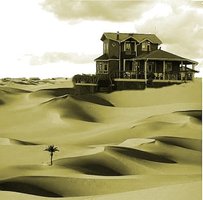
El ritmo es acelerado (Tal vez) por su forma de mostrar todas estas historias, que convergen en un solo cause y el conector de ellas es “La Casa Verde”, se debe estar atentos a cada parte pues este, posible rompecabezas, se va armando a medida que vamos avanzando en la lectura y cada conjunto de historias se van uniendo de forma sistemática y de una forma muy curiosa, ya que se van entendiendo ciertas situaciones con respecto se van leyendo las otras.
3. What style does this book have in terms of writing?
In one of the reviews I have read about this book, Vargas Llosa comments that for the time this style of narrative was avant-garde and modern, somewhat daring, but that this risk won him an award and good reviews.
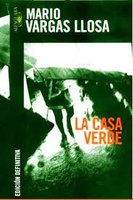
Los tiempos de este relato varían con cada historia, en una de las reseñas que he leído respecto a este libro, Vargas Llosa comenta que para la época ese estilo de narrativa era vanguardista y moderno algo osado, pero que este riesgo le otorgó un premio y buena crítica.

Mario Vargas Llosa.
"Mario Vargas Llosa is a Peruvian writer, nationalized Spanish, born in Arequipa in 1936, known for his novels and essays, besides being a fierce critic of socialism and leftist ideas. He has won several international awards as well as the prestigious Nobel Prize for Literature in 2010. Among his most famous books are: The City and the Dogs (1962), Conversation in the Cathedral (1969), The Feast of the Goat (2000).

“Mario Vargas Llosa” es un escritor peruano, nacionalizado español, nacido en Arequipa en 1936, conocido por sus novelas y ensayos, además de ser un férreo crítico del socialismo e ideas de izquierda. Ha sido ganador de varios premios internacionales asi como el prestigioso premio Nobel de Literatura en el año 2010. Entre sus libros más famosos se encuentran: La ciudad y los perros (1962), Conversación en La Catedral (1969), La fiesta del Chivo (2000).

| Resources//Referencias | Link |
|---|---|
| 1 | LA CASA VERDE |
| 2 | history summary |
| 3 | Mario Vargas Llosa |
0
0
0.000

Hi cesaramos,
Visit curiehive.com or join the Curie Discord community to learn more.
Thanks community, cheers...